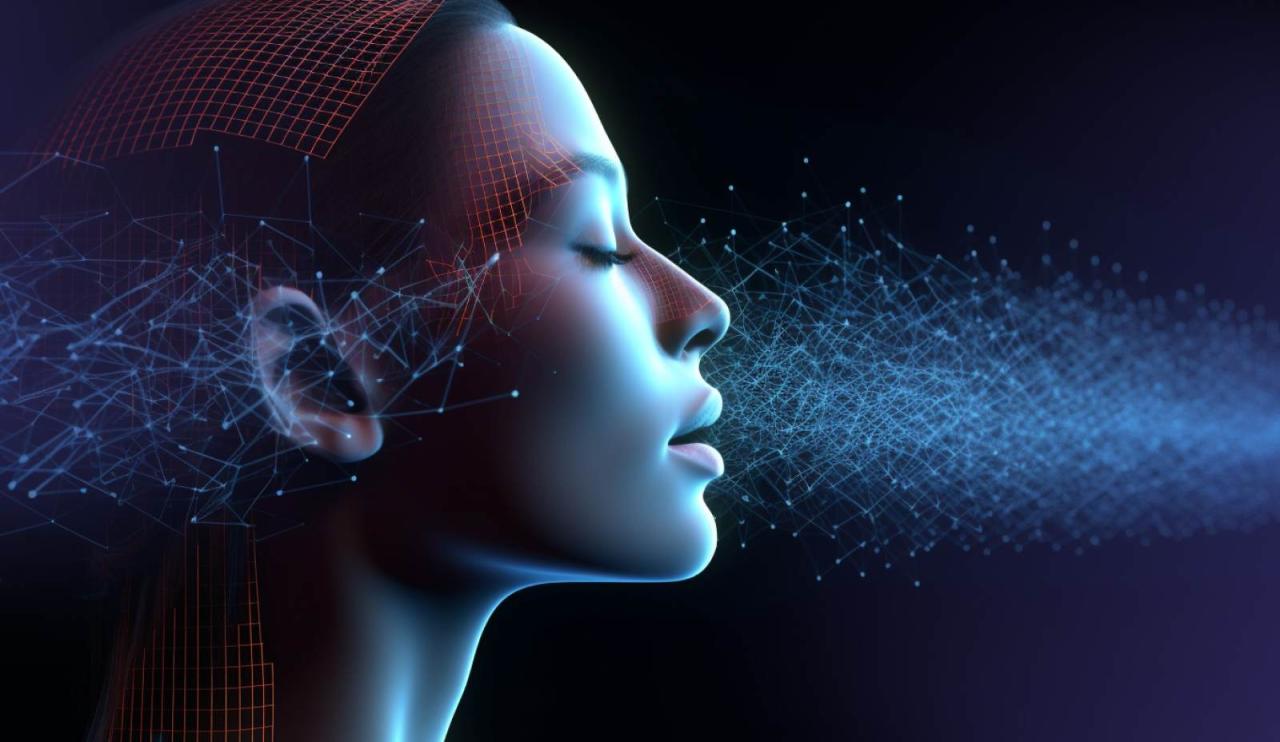Best AI voice generator for realistic human voices? It’s a hot topic! We’re diving into the world of incredibly lifelike AI-generated speech, exploring how this technology has evolved, the top contenders in the market, and what makes a truly realistic voice. Get ready to discover the best tools for your needs, whether you’re creating audiobooks, crafting engaging video content, or simply experimenting with the cutting edge of AI.
This guide will equip you with the knowledge to navigate the landscape of AI voice generators, helping you understand the factors that influence realism, the diverse applications of this technology, and the future trends shaping this exciting field. We’ll break down the key features of leading AI voice generators, offering a clear comparison to help you make an informed decision.
Finding the best AI voice generator for realistic human voices can be tricky, but it’s a cool field! If you’re interested in building these tools yourself, you might want to consider becoming a full stack developer ; they have the skills to create the entire system, from the backend AI to the user interface. So, whether you use a pre-built generator or create your own, remember the possibilities are endless when it comes to realistic AI voices.
AI Voice Generation: A Deep Dive
The world of AI voice generation has exploded in recent years, transforming how we interact with technology and each other. This advancement stems from decades of research and development, culminating in incredibly realistic and expressive synthetic voices. We’ll explore the technology behind these advancements, analyze leading AI voice generators, and discuss the future of this rapidly evolving field.
Introduction to AI Voice Generation

AI voice generation, also known as text-to-speech (TTS), has come a long way from its robotic beginnings. Early TTS systems relied on concatenative synthesis, stitching together pre-recorded speech segments. This resulted in unnatural-sounding voices with limited expressiveness. The advent of parametric synthesis, using algorithms to model the human vocal tract, significantly improved naturalness. Today, deep learning, particularly neural networks, are driving the creation of remarkably realistic voices.
Several key factors contribute to the realism of AI-generated voices. These include high-quality training data (vast amounts of diverse speech recordings), sophisticated algorithms capable of modeling subtle nuances in intonation and pronunciation, and the ability to control parameters like pitch, speed, and emotion. Different techniques, including WaveNet, Tacotron, and FastSpeech, each offer unique strengths in terms of speed, quality, and controllability.
Top AI Voice Generators: A Comparative Analysis
Several leading AI voice generators offer compelling features and capabilities. Below is a comparison of five popular options, highlighting their strengths, weaknesses, and pricing models. Note that pricing and features can change, so it’s essential to check the provider’s website for the most up-to-date information.
| Generator Name | Strengths | Weaknesses | Pricing Model |
|---|---|---|---|
| Google Cloud Text-to-Speech | High-quality, natural-sounding voices; wide range of languages and accents; robust API integration. | Can be expensive for high-volume use; limited customization options compared to some competitors. | Pay-as-you-go based on usage. |
| Amazon Polly | Extensive voice selection; easy integration with AWS services; cost-effective for moderate usage. | Fewer highly realistic voices compared to some competitors; less customization. | Pay-as-you-go based on usage. |
| Microsoft Azure Text to Speech | Good quality voices; seamless integration with other Microsoft products; neural voices offer high naturalness. | Pricing can become substantial for large-scale projects; customization options are less extensive than some others. | Pay-as-you-go based on usage. |
| ElevenLabs | Focus on highly realistic and expressive voices; strong community support. | Relatively new player, so features may be less comprehensive than established services; pricing may change. | Subscription-based and pay-as-you-go options. |
| Murf.ai | User-friendly interface; wide variety of voices and styles; good for creating voiceovers and podcasts. | Some voices may not be as natural as the top competitors; features might be limited compared to enterprise solutions. | Subscription-based with various plans. |
Audio samples from each generator would showcase diverse vocal qualities. For example, Google Cloud’s voices often demonstrate excellent clarity and pronunciation, while ElevenLabs might excel in conveying emotion. Amazon Polly’s voices tend to be versatile, suitable for many applications. Microsoft Azure offers a good balance between quality and ease of use. Murf.ai emphasizes a straightforward user experience.
Each generator offers a different user interface and experience. Some, like Murf.ai, prioritize simplicity and ease of use, while others, like those integrated into cloud platforms, may require more technical expertise.
Factors Influencing Voice Realism
The realism of AI-generated voices is heavily influenced by the underlying TTS models. Advanced models like those based on neural networks and deep learning are crucial in capturing the intricate details of human speech.
Finding the best AI voice generator for realistic human voices can be tricky, but it’s worth the effort for projects needing a natural sound. Think about how useful this technology could be for news reporting – imagine creating a quick audio summary of events like the unfortunate injury to Rep. Virginia Foxx, reported here: Rep. Virginia Foxx injured outside House chamber in Capitol building.
With the right AI voice, you could quickly generate an accessible audio update. So, choosing the perfect AI voice generator is key for various applications, from news to podcasts.
Neural networks, particularly deep learning models, play a vital role in achieving human-like voices. These models can learn complex patterns from massive datasets of speech, enabling them to generate voices with natural intonation, rhythm, and pronunciation. However, generating emotionally nuanced and expressive voices remains a significant challenge. While progress has been made, replicating the full spectrum of human emotion in a synthetic voice is still an area of active research.
Applications of Realistic AI Voices

Realistic AI voices are transforming various industries. In entertainment, they are used for video game characters, audiobooks, and animated films. Education benefits from personalized learning experiences, and customer service utilizes AI voices for chatbots and automated phone systems.
Consider a scenario where a museum uses a realistic AI voice to provide guided tours. The AI voice can be customized to match the personality of a historical figure or the tone of the exhibit, creating a more immersive and engaging experience for visitors. This could increase visitor satisfaction and engagement, leading to a more positive perception of the museum.
Finding the best AI voice generator for realistic human voices can be tricky, but it’s worth the effort for projects needing that extra touch of authenticity. Want a break from tech? Check out the amazing Quadrantid meteor shower to light up skies – here’s the best way to see it! Then, once you’ve had your celestial fix, get back to choosing that perfect AI voice; after all, a great voice can really make your project shine.
Ethical considerations include potential misuse for impersonation, the spread of misinformation, and the need for transparency when AI voices are used. Clear labeling and responsible development are essential.
Future Trends in AI Voice Generation

The future of AI voice generation promises exciting developments. We can expect even more realistic and expressive voices, capable of conveying subtle emotional nuances and adapting to various speaking styles. Personalized AI voices, tailored to individual preferences, are also on the horizon. Advances in voice cloning and modification techniques will likely lead to new creative possibilities, but also raise ethical concerns.
For example, imagine a future where users can create unique, personalized AI voices for their smart assistants, mirroring their own voice or adopting a desired persona. However, this also raises concerns about potential misuse, particularly regarding deepfakes and identity theft.
Choosing the Right AI Voice Generator, Best AI voice generator for realistic human voices
Selecting the best AI voice generator depends on specific project needs. A decision-making flowchart, combined with a checklist of factors, can simplify the process. The checklist should consider factors such as voice quality, naturalness, language support, features (like emotion control and customization), pricing, and ease of use. Assessing suitability involves matching the generator’s capabilities to the project’s requirements, ensuring a seamless and effective implementation.
Final Wrap-Up

From the evolution of text-to-speech to the ethical considerations surrounding hyperrealistic AI voices, we’ve covered a lot of ground. Choosing the right AI voice generator is a crucial step in any project, and hopefully, this guide has provided you with the tools and insights to make the best choice for your specific needs. Remember to consider factors like voice quality, ease of use, pricing, and the intended application.
Now go forth and create some amazing audio!
Questions Often Asked: Best AI Voice Generator For Realistic Human Voices
What are the limitations of current AI voice generators?
While incredibly advanced, current AI voice generators can still struggle with complex sentences, nuanced emotional expression, and perfect pronunciation of uncommon words or names. They also may not always handle background noise well.
Are there free AI voice generators?
Yes, several AI voice generators offer free tiers or trials, often with limitations on usage or voice quality. However, most advanced features and higher quality voices usually require paid subscriptions.
How do I choose the right voice for my project?
Consider your target audience, the tone and style of your project, and the overall message you want to convey. Experiment with different voices and accents to find the perfect fit.
Can I use AI-generated voices for commercial purposes?
Always check the license agreement of the AI voice generator you choose. Some allow commercial use, while others may restrict it or require additional licensing fees.
